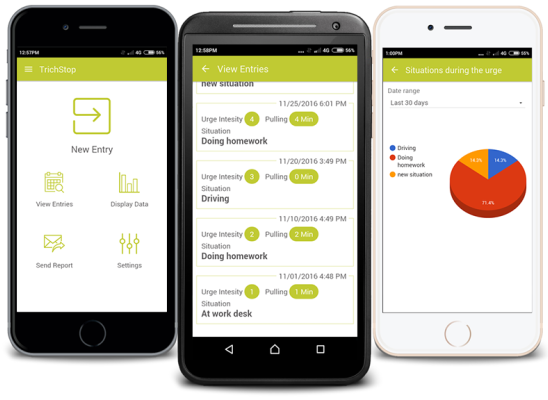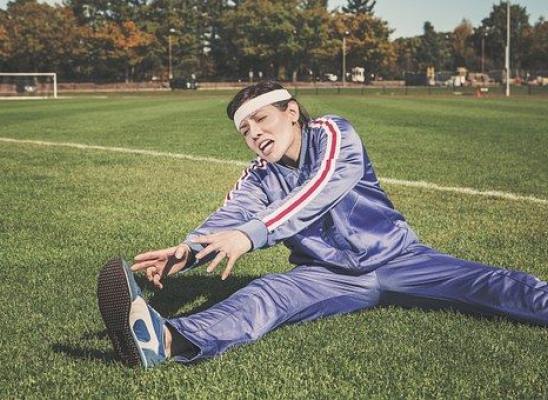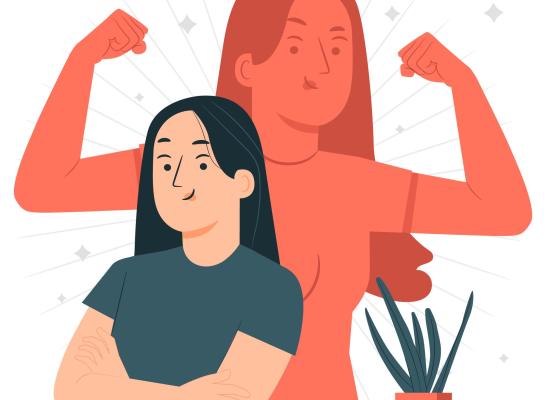Online ACT for Teens with Trich: Can It Work?

Online test
Find out the severity of your symptoms with this free online test
Trichotillomania (TTM) is a disorder frequently diagnosed in late childhood or adolescence. It is estimated that the lifetime prevalence of TTM for adolescents is about 1-3% so it is not an uncommon phenomenon. TTM is also associated with other mental health issues such as anxiety, depression, diminished self-esteem, and impaired social and academic functioning. It is generally accepted that the early intervention can help to manage the effects of TTM.
There are a number of therapeutic approaches that have shown to be helpful for teens living with TTM. Habit Reversal Training (HRT) is one of the most widely used treatment approaches but treatment outcomes are not always lasting. More recently, researchers have been exploring other cognitive approaches such as Acceptance and Commitment Therapy (ACT), especially when combined with HRT. This ACT-enhanced behavior therapy has been shown to be particularly effective with both adults and adolescents with TTM.
The challenge when working with teens is to find ways to bring treatment to them in a way that is sensitive to their needs and their preferences. It’s important to engage them in ways that are comfortable and inviting. Most teens are comfortable with technology and the virtual space. The covid pandemic has changed the way therapy can be accessed. The availability of online therapy has opened new opportunities for seeking help, especially in underserved or geographically remote areas. But is online therapy effective? Can online ACT-enhanced behavioral therapy offer results similar to in-person therapy? A new study seems to say, “yes”.
Why ACT?
One of the things that researchers have found is that all hair pulling is not the same. How people pull is different. Some engage in very mindful, intentional pulling. Others engage in more automatic, trance-like pulling. Some people may engage in both types of pulling.
Habit Reversal Training (HRT) has long been the most widely used non-pharmaceutical treatment for hair pulling. HRT is well-suited to address the automatic components of hairpulling because of its strong focus on awareness, blocking, and reinforcement elements. What it lacks is the ability to address the emotional and cognitive factors associated with hair pulling. This has prompted researchers to look at treatment approaches that can address the areas that HRT does not such as the urges, the emotions and thoughts that accompany hair pulling episodes.
ACT, on the other hand, addresses the emotional and cognitive aspects of hair pulling behavior. ACT is a powerful, evidence-based intervention that uses acceptance and mindfulness strategies, together with commitment and behavior change strategies, to increase psychological flexibility. At its core, the aim of ACT is to accept what is out of one’s control and commit to actions that can improve and enrich one’s life.
One of the primary goals of ACT is to learn skills, known as mindfulness skills, for handling painful thoughts, feelings, urges, images, and memories (called private experiences) in such a way that they have much less impact on the person. Developing a new mindful relationship with experiences allows the person to make positive changes. For someone with hair pulling, this acceptance may allow the person to experience urges simply as bodily sensations and internal thoughts that do not need to be stopped before engaging in meaningful activities. This makes ACT a potential treatment for hair pulling, addressing the components that other therapies cannot.
Taking ACT-Enhanced Behavior Therapy Online
Building on previous research that supports online therapy for TTM with adolescents, the study researchers decided to take ACT-Enhanced Behavior Therapy one step further. They hypothesized that ACT-enhanced behavior therapy would result in reductions in hair pulling and an increase in psychological flexibility over the control group. They also predicted that delivering treatment online would be feasible and result high treatment integrity ratings as well as low drop out scores. Assessment and therapy were provided via secure video platform. Therapy consisted of 10 sessions. Caregivers were included in the process. They were offered handouts and participated in the final minutes of each session.
The results of the study validated their hypotheses. The treatment was delivered with fidelity and 100% session completion. The teens in the treatment group reported significant reduction in pulling as well as improvement in psychological flexibility and psychological distress.
The Takeaway
This study, along with previous work combining ACT-enhanced behavior therapy and online delivery, suggests that this model may be a promising approach to treating TTM in adolescents. ACT addresses those components of hair pulling that other treatments may not and takes a mindfulness approach that is quite comfortable for many people. Providing the therapy online circumvents many of the common barriers to therapy. The online format may be particularly appealing to teens and create a comfortable familiar space for them.
While more research is needed, online ACT-enhanced behavioral therapy shows promise as an effective treatment option for teens living with TTM and offers hope for more effective and accessible treatment options for those dealing with a hair pulling disorder.
References
1. Christenson, G. A., Pyle, R. L., & Mitchell, J. E. (1991). Estimated lifetime prevalence of trichotillomania in college students. The Journal of clinical psychiatry, 52(10), 415–417. https://pubmed.ncbi.nlm.nih.gov/1938977/
2. Grant, J. E., Redden, S. A., Leppink, E. W., Odlaug, B. L., & Chamberlain, S. R. (2016). Psychosocial dysfunction associated with skin picking disorder and trichotillomania. Psychiatry research, 239, 68–71. https://pubmed.ncbi.nlm.nih.gov/27137963/
3. Lee, E. B., Homan, K. J., Morrison, K. L., Ong, C. W., Levin, M. E., & Twohig, M. P. (2020). Acceptance and Commitment Therapy for Trichotillomania: A Randomized Controlled Trial of Adults and Adolescents. Behavior Modification, 44(1), 70–91. https://doi.org/10.1177/0145445518794366
4. Twohig, M. P., Petersen, J. M., Fruge, J., Ong, C. W., Barney, J. L., Krafft, J., … Levin, M. E. (2021). A pilot randomized controlled trial of online-delivered ACT-enhanced behavior therapy for trichotillomania in adolescents. Cognitive and Behavioral Practice. https://digitalcommons.usu.edu/cgi/viewcontent.cgi?article=1049&context=psych_stures
5. Flessner, C. A., Woods, D. W., Franklin, M. E., Cashin, S. E., & Keuthen, N. J. (2007). The Milwaukee inventory for subtypes of trichotillomania-adult version (MIST-A): Development of an instrument for the assessment of “Focused” and “Automatic” hair pulling. Journal of Psychopathology and Behavioral Assessment, 30(1), 20-30.https://www.bfrb.org/storage/documents/Scales/MIST-A.pdf
6. Association for Contextual Behavioral Science. (n.d.). Acceptance & Commitment Therapy (ACT). Retrieved from https://contextualscience.org/act
7. Counselling Connection. (2016, July 20). ACT: Definitions, goals and underlying philosophy. Retrieved from https://www.counsellingconnection.com/index.php/2013/10/11/act-definitions-goals-and-underlying-philosophy/
8. Lee, E. B., Haeger, J. A., Levin, M. E., Ong, C. W., & Twohig, M. P. (2018). Telepsychotherapy for trichotillomania: A randomized controlled trial of ACT-enhanced behavior therapy. Journal of Obsessive-Compulsive and Related Disorders, 18, (1), 106-115. https://www.sciencedirect.com/science/article/abs/pii/S2211364918300459?via%3Dihub
Online test
Find out the severity of your symptoms with this free online test
Start your journey with TrichStop
Take control of your life and find freedom from hair pulling through professional therapy and evidence-based behavioral techniques.
Start Now



